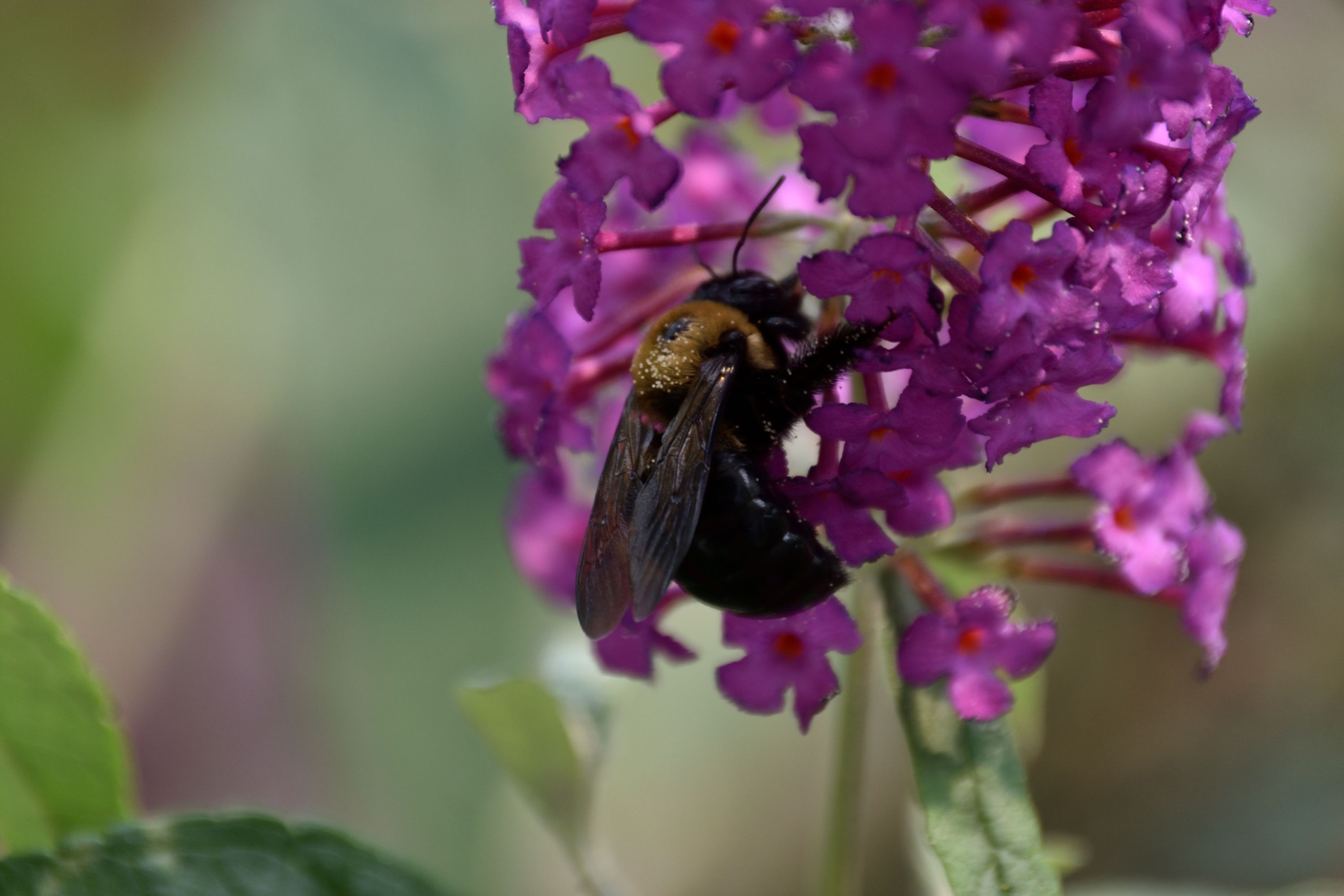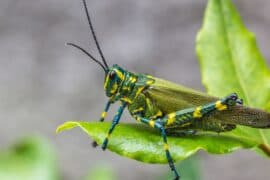Eastern carpenter bee
(Xylocopa virginica)

Description
Xylocopa virginica, sometimes referred to as the eastern carpenter bee, extends through the eastern United States and into Canada. They are sympatric with Xylocopa micans in much of southeastern United States.They nest in various types of wood and eat pollen and nectar.In X. virginica, dominant females do not focus solely on egg-laying, as in other bee species considered to have "queens". Instead, dominant X. virginica females are responsible for a full gamut of activities including reproduction, foraging, and nest construction, whereas subordinate bees may engage in little activity outside of guarding the nest. The bee is similar in size to bumblebees, but has a glossy, mostly black body with a slight metallic purple tint. X. virginica males and females have generally the same mass, but can be differentiated visually by the male's longer body and the female's wider head. The males also have a white spot on their face. Additionally, the males have larger thoracic volumes for given masses.Females of different social standing can also be told apart based on morphology. Primary females are larger than secondary or tertiary females, and also have more mandibular and wing wear. X. virginica have distinctive maxillae that are adapted to performing perforations on corolla tubes to reach nectaries. Their maxillae are sharp and wedge-shaped, allowing them to split the side of corolla tubes externally to access the nectar. Eastern carpenter bees also have galae on their maxillae that are shaped like large, flat blades. Bees with sharp galae can use these to further aid in penetrating the corolla tubes. X. virginica build their nests in wood, bamboo culms, agave stalks, and other comparable materials, but they prefer to nest in milled pine or cedar lumber. The nests are built by scraping wood shavings off of the wall. These shavings are then used to create partitions between nesting cells. The entrance cuts into the wood perpendicular to the grain, but they are built parallel beyond the entrance. These nests may be either social, containing groups of two to five females, or solitary. Social nests are more common, despite the fact that brood productivity is actually lower when females choose to nest together.Because X. virginica builds its nests in wood structures, it is common for it to nest in constructed furniture or buildings.
Taxonomic tree:







